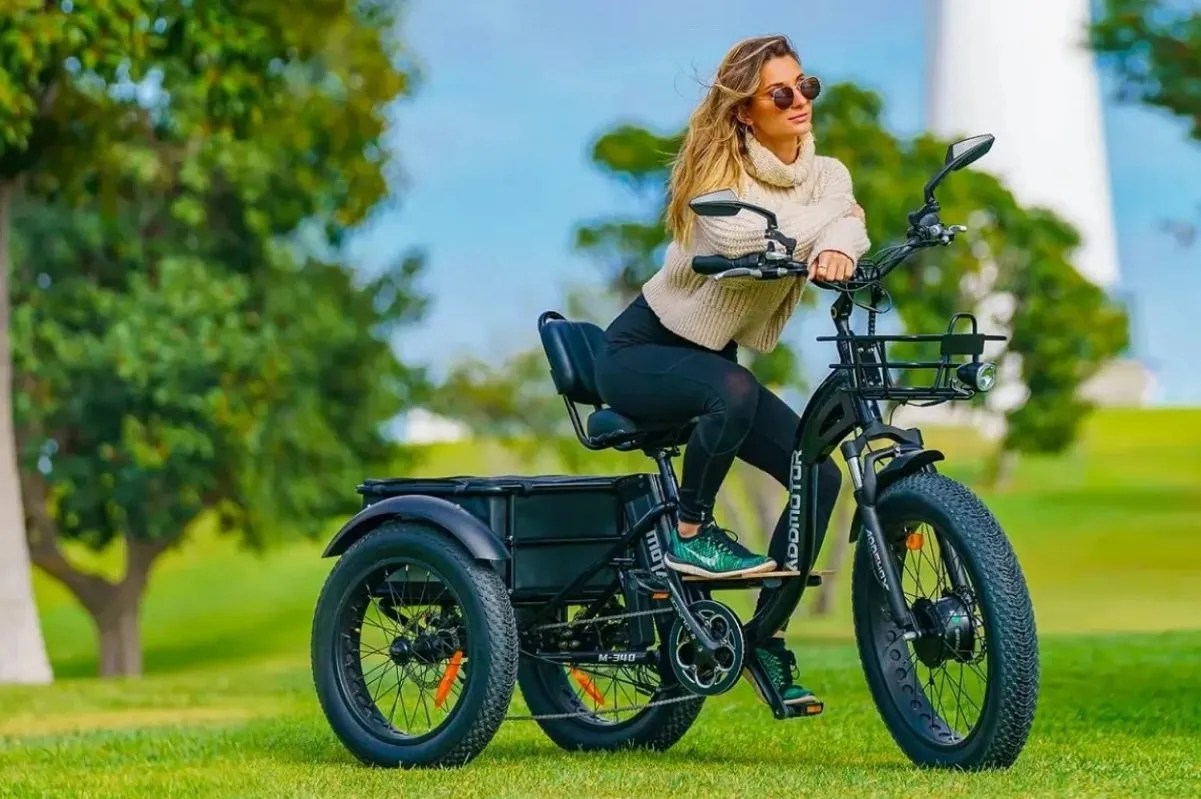
Are you considering transitioning from a traditional bike to an electric trike, or just curious about the differences between these two types of bikes? Well, an electric adult trike is a three-wheeled electric vehicle propelled by an electric motor to assist the rider’s pedaling, designed to offer a convenient and eco-friendly alternative to traditional bikes. On the other side of the spectrum, traditional bikes are two-wheeled vehicles that rely solely on the rider’s effort to propel them forward and have been the time-honored choice for commuting and recreation. Here starts the etrikes VS traditional bike competition.
So, which one is right for you? In this article, we will compare and contrast both etrike and traditional bikes, to help you find the best option for your needs. So, let’s get started.

Electric Trikes vs. Traditional Bikes
There are many factors to consider when comparing etrikes and traditional bikes, such as:
Riding Experience
Etrikes, with their stable three-wheeled design, provide a smoother and more relaxed ride, requiring less effort and balance. They also allow you to adjust the level of assistance from the motor, depending on the terrain, speed, and personal preference.
Traditional bikes, on the other hand, offer a more challenging ride, as they demand more skill and stamina from the rider. You will have more control and responsiveness, as two-wheelers are lighter and more agile than etrikes.
Cargo Capacity
Electric adult trike outshines traditional bikes in hauling with the added stability of the three-wheel configuration and weight capacity, making them a practical choice for carrying groceries, luggage, pets, or even doing small-scale businesses. They often come with built-in baskets, racks, or trailers, which make them convenient for shopping, commuting, or traveling.
Traditional bikes, limited by their frame, space, weight capacity, and design, struggle to compete in this aspect. They can be equipped with accessories but may affect the balance and handling of the bike. Traditional bikes are also more prone to tipping over or swaying when carrying heavy or bulky loads, posing potential discomfort and danger for the rider.
Terrain and Weather Conditions
Fat tire etrike excels on uneven or bumpy terrain, providing greater stability and control. They are also well-suited for wet or slippery conditions, offering enhanced traction. In contrast, traditional bikes are better suited for smooth surfaces and dry weather.
Comfort & Stability
With a more cushioned seat and a more upright and ergonomic posture, etrikes offer more comfort and stability than traditional bikes. Etrikes also have more stability, as they have three wheels and a lower center of gravity, which makes them easier to balance and steer.
Traditional bikes, with a classic riding posture, may lack prolonged comfort, especially for those with back or joint issues. Their bent posture and two-wheel design contribute to less stability and a higher center of gravity, making them harder to steer.
Range and Distance
Etrikes, powered by batteries, can cover longer distances, up to 90+ miles on a single charge, providing an ideal option for those seeking longer journeys with less effort. In contrast, traditional bikes rely solely on human power, with the range determined by the rider’s stamina and endurance, varying based on physical condition and terrain.
Accessibility and Inclusivity
Electric trikes are suitable for a broader range of riders than traditional bikes, as they can accommodate different ages, abilities, and preferences. They provide assistance and support, to help riders overcome physical barriers, such as fatigue, pain, disability, or fear. Electric trikes are ideal for riders who want to enjoy the benefits of cycling, regardless of their limitations or challenges.
With their design and physical exertion requirements, traditional bikes may limit accessibility, especially for those with specific physical fitness levels, potentially excluding some individuals from a more relaxed commuting experience.
Cost and Maintenance
Etrikes, with their electric components, may have a higher upfront cost but could potentially offer long-term savings through reduced maintenance requirements. Conversely, traditional bikes, with their simplicity, generally incur lower initial costs and maintenance expenses.
Types of Etrikes and Their Advantages
Now that we have compared etrikes and traditional bikes, let’s take a look at some of the best types of etrikes and their advantages.
Folding Etrikes

Folding Etrikes stand out for their compact design, providing a convenient solution for urban dwellers facing storage and portability challenges.
The Addmotor CITYTRI E-310, a stellar representative of folding electric adult trike, seamlessly blends portability with performance with its advanced features and highest specifications. Its practical 24.8″ folding frame ensures effortless storage, while the 750W rear-mounted electric motor guarantees a smooth and efficient ride.
Its portability allows it to easily fit in various spaces, such as car trunks, buses, trains, closets, or garages. The CITYTRI E-310 is a compelling choice for commuters seeking convenience without compromising on performance, suitable for commuting, shopping, traveling, or leisure.
Fat Tire Etrikes
These etrikes come with large and wide tires, which provide more stability and traction. They have more contact surface and air volume, which makes them more resistant to punctures and shocks.
A prime example is the Addmotor Grandtan II 2024, a fat tire etrike with 24″ X 4.0″ front & 20″ X 4.0″ rear fat tires, ensuring a smooth and stable ride across various terrains and weather conditions. Its robust frame, combined with oversized tires, guarantees stability on diverse landscapes, intensifying the off-road experience.

Boasting a 2271 Battery and 750W motor, the Grandstand II is a powerful and rugged fat tire etrike, perfect for adventurous exploration. Whether tackling rugged trails, sand, snow, mud, or gravel in any weather, this etrike offers a stable and exhilarating ride for those craving unconventional biking experiences.
Semi-Recumbent Etrikes
Semi-recumbent etrikes have a reclined seat and a lower pedal position, which provide more comfort and support.
The ARISETAN II M-360 2024, an exemplary semi-recumbent Etrike, redefines comfort with its ergonomic seating and efficient design. Ideal for commuters or leisure riders seeking a relaxed riding posture, this model ensures a comfortable experience. Its spacious and padded seat, coupled with the backrest, reduces the pressure and strain on the spine, neck, and joints.

Besides this, the front suspension on the electric trike minimizes jolts and vibrations, delivering a more comfortable and enjoyable riding experience. This etrike is perfect for elders, anyone with a disability, and riders who have back, neck, or joint problems, or who prefer a more relaxed and comfortable ride. The addmotor ARISETAN II M-360 2024 is a cozy and elegant semi-recumbent etrike that can cater to any rider’s needs.
Conclusion
In the clash of Etrikes versus Traditional Bikes, each type brings unique advantages to the table. The riding experience, cargo capacity, comfort, and environmental impact are pivotal factors influencing the choice between the two.
Electric trikes are a great alternative to traditional bikes, as they offer more features, benefits, and options, to suit different riders and scenarios. Exemplified by the diverse offerings from Addmotor, etrike showcases distinct advantages, from enhanced stability to redefining personal transportation, it appeals to a spectrum of users.
All in all, they are more fun, eco-friendly, and convenient, than traditional bikes, and can improve the quality of life of many riders.

